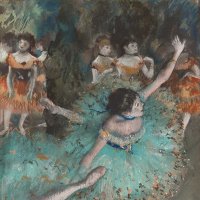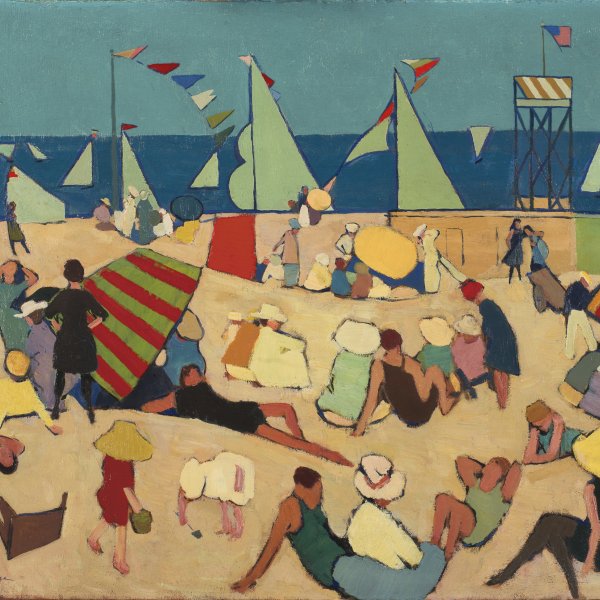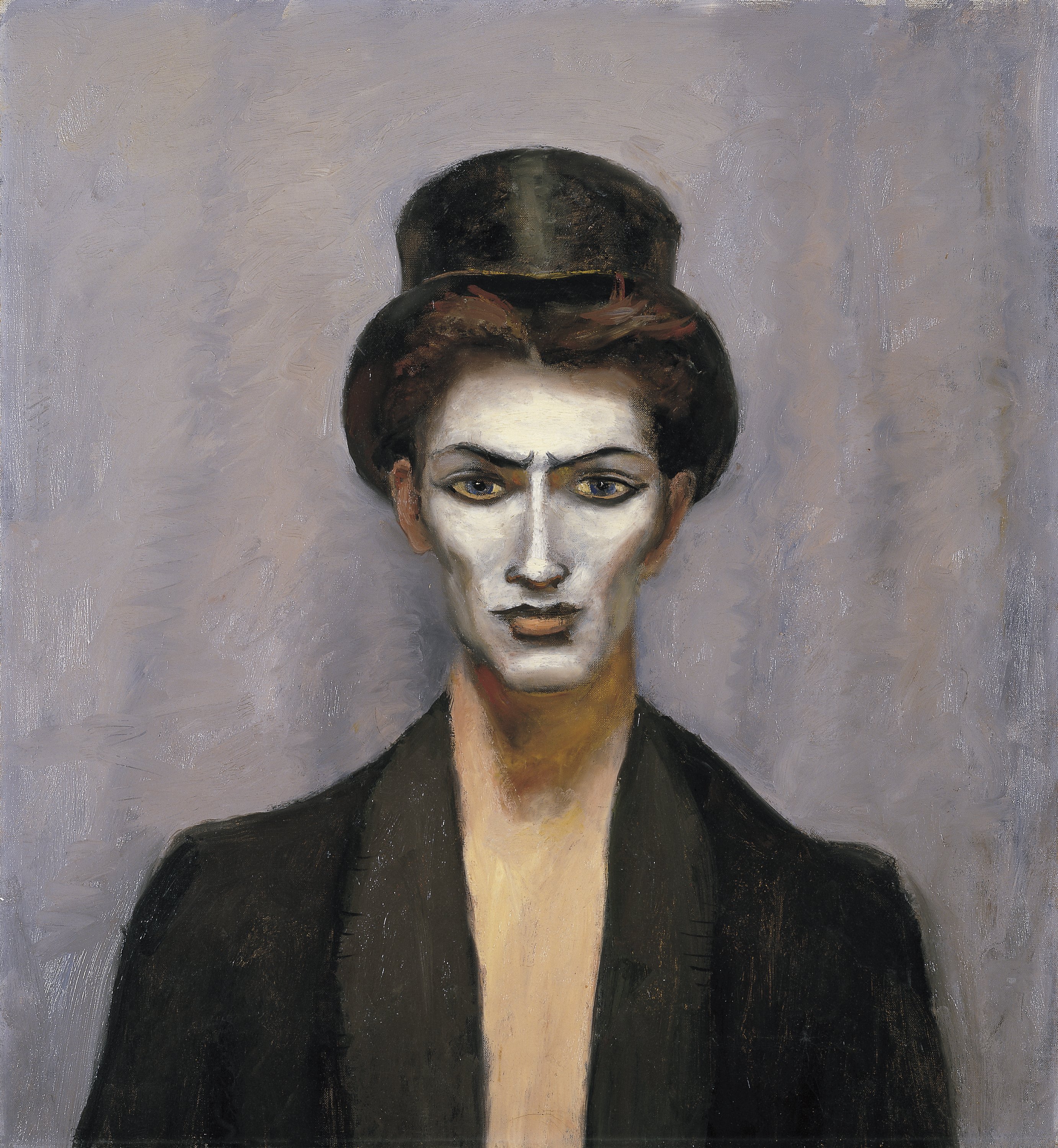Chico in Top Hat is one of the many representations of circus performers constituting a fundamental part of Kuhn's artistic creation. One of the best examples of this subject is White Clown, painted in 1929, now at the National Gallery of Washington, and his most famous work. In that painting, Kuhn composed a monumental, robust figure in a sitting position, which takes up the entire canvas, and which patently shows the influence of Cézanne's concept of composition. Chico in Top Hat, on the other hand, clearly reveals a difference in its artistic design and execution. The stylised figure of the young clown wearing a jacket and a black top hat stands out against a grey background with wide vertical folds. His long bony face is covered in thick white makeup with strong black lines outlining the eyebrows, eyes and lips. The painting is executed with a restricted range of colours, which Kuhn uses to give intense effects of light. Chico presents a frontal gaze and is strongly hieratic, with a restrained expression conveying intense melancholy. Clearly, the emphasis is on the huge eyes, a characteristic of the majority of Kuhn's figures from the 1920s until the end of his life, although this was not the case of White Clown, in which the painter was more interested in the volume and plasticity of the body. Here, the character stares at a point outside the painting, where the spectator stands, but the intensity of his gaze is not really on the viewer or on an object outside the picture; it hides a deep sense of solitude and of interior crisis, which Kuhn's friends had perceived in the painter himself during the last months of his life, when he held his last exhibition at the Durand-Ruel Gallery in New York. In November 1948 he had a nervous breakdown followed by a gastric perforation, as a consequence of which he died in a hospital in New York.
Kuhn's relationship with the performing arts was not just an artistic option in line with so many representations of harlequins, clowns, actors and circus performers, starting with Watteau's Gilles, Degas' circus scenes, Picasso's harlequins and Rouault's characters. Among the American painters, Everett Shinn had depicted theatre and variety shows, while Bellows and Luks had chosen boxing matches. The direct and realistic representation of the figure recalls the circle of realist painters in which Walt Kuhn had moved in his initial years. Although he was not a direct follower of Robert Henri or of the so called Ash Can School, he was in touch with him and his circle during the organisation of the Exhibition of Independent Artists held in 1910, three years before the Armory Show. Kuhn shared with the realist artists a taste for the direct observation of things, and particularly a strong rejection of academic conservatism. He had always been a skilful entrepreneur and organiser. His link with the world of the performing arts went back to his youth when he was responsible for delivering to the theatres the costumes made in the shop where he worked, and he often delayed behind the scenes. Later, he executed some advertising commissions for the circus and in 1928 he collaborated with Libby Holman in the vaudeville show Merry-Go-Round, for which he designed the set and costumes. The characters which fill his paintings of the 1920s, 30s and 40s were generally professional performers and not models, and Kuhn and his wife designed the circus or theatre costumes with which they were portrayed.
Carmen Bernárdez Sanchís
 Search
Ir al contenido principal
Search
Ir al contenido principal






